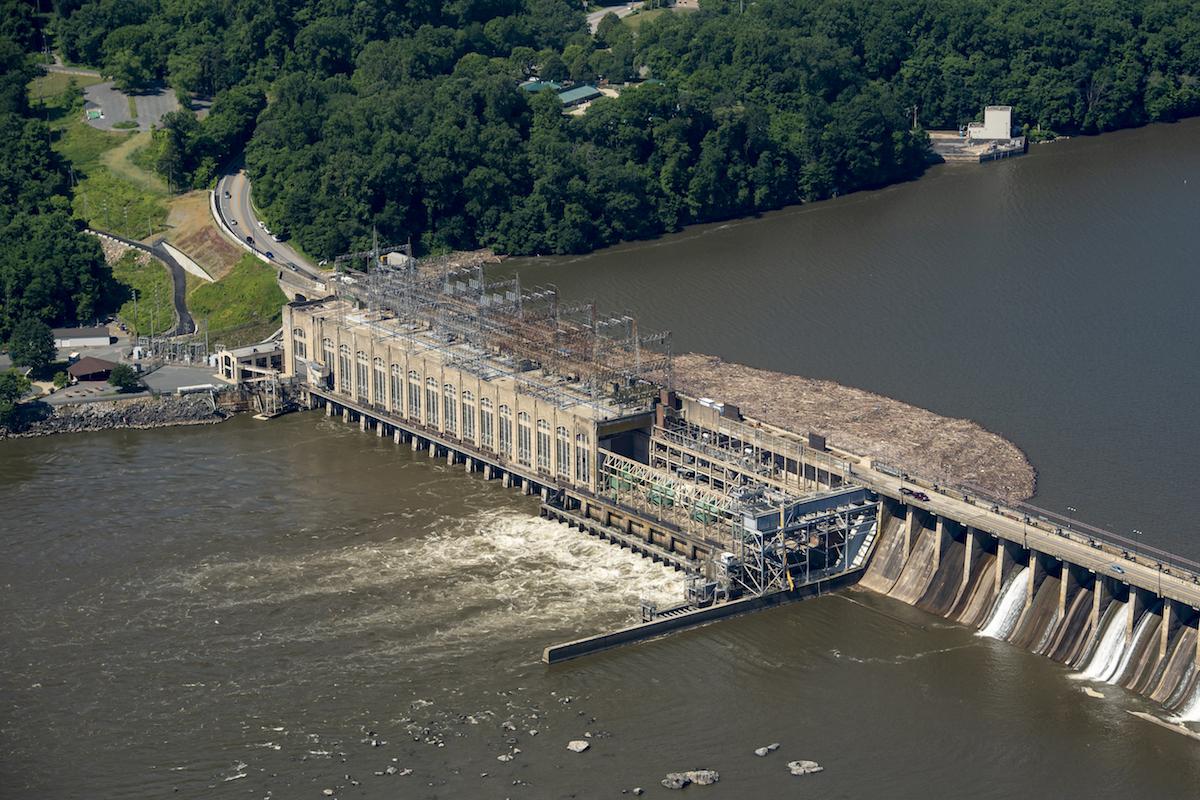In an important step toward understanding the role that dredging can play in mitigating the effects of upstream discharges and the lost trapping capacity of the Conowingo Dam, the Maryland Environmental Service (MES), in coordination with the Maryland Department of the Environment (MDE), today announced that the dredging portion of the Conowingo Dredging and Innovative and Beneficial Reuse Pilot Project is scheduled to begin.
The contractor will dredge approximately 1,000 cubic yards of sediment, equivalent to 100 dump truck loads, from the Conowingo Reservoir, providing dredged material for various innovative reuse testing programs, including concrete and asphalt manufacturing, cement clinker, soil blending for sport horticulture, engineered highway soil, and/or supplemental cementitious materials.
“The initiation of dredging at the Conowingo Dam is an exciting move forward for the Conowingo Dredging and Innovative and Beneficial Reuse Pilot Project,” said Dr. Charles Glass, Executive Director of MES. “The removal and dewatering, and subsequent testing of the dredged material allows us to explore new options for long term solutions for improving the overall health of the Chesapeake Bay and will provide greater insight into beneficial reuse of dredge materials.”
The Conowingo Hydroelectric Dam, constructed in 1928, and owned and operated by Exelon Generation Company, LLC, has in the past trapped sediment and nutrients that enter the Susquehanna River upstream of the dam. Scientific reports confirm that the Conowingo Dam has reached full capacity and can no longer trap sediment and nutrients, meaning that upstream pollution is now entering the Chesapeake Bay.
The Conowingo Dredging and Innovative and Beneficial Reuse Pilot Project is part of a multi-pronged approach to improve the health of the Chesapeake Bay. The state’s holistic strategy includes conditions relating to the relicensing of the dam and an agreement between MDE and Exelon that requires the company to invest more than $200 million in ecological and environmental projects and services, and operational enhancements to improve water quality in the Susquehanna River and Chesapeake Bay. It also includes an unprecedented, multi-state Conowingo Watershed Implementation Plan specifically designed to address the additional pollution that is moving into the Chesapeake Bay as a result of the lost trapping capacity of the Conowingo Dam.
“Maryland is taking a holistic and aggressive approach to restoring the Chesapeake Bay, working with states, the federal government, and many others to reduce pollution upstream and behind the Conowingo Dam so we can clean the water, increase climate resiliency, and put sediment to productive use,” said Maryland Environment Secretary Ben Grumbles.
The dredging work should be completed in October 2021. Upon completion of the innovative reuse portion of the project, a report summarizing the findings of the demonstration projects will be issued by summer 2022.




Eric L. Werner says
After several years of this being the only sensible course of action it is about time some action was taken. It is probably the most reparable damage that is currently being done to the Bay. Now if they would just get off their butts and shut down Omega we might make some measurable progress in Bay restoration.
Capt. Robert Newberry says
Well finally!! Someone has finally woken up and is moving forward with the situation at the conowingo dam. We at delmarva fisheries association are glad to see this being done as a solution to the constant influx of nutrients and sediment into the bay from the susquehanna river. This is only been an ongoing problem for the past 5 years, and finally it will be done to prove there are other uses for the sediment behind the dam. I certainly hope that the chesapeake bay foundation and other environmental non-government organizations support this pilot project for the dredging.Now maybe the bay will become a cleaner place once they find out the value of what they will be dredging in the pilot program. Next move, man of war shoals for the dredging of oyster shell. That’s 150 million bushels of oyster shells that will reestablish 15,000 acres of bottom in the bay along with contributing to the aquaculture industry. It looks like the wheels are bureaucracy are starting to turn. Slowly, but at least they are turning in the right direction. Just stay the course!